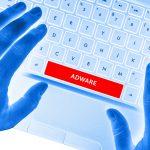ClickFix malware has emerged as a significant threat, impacting users across various platforms. This malicious software operates stealthily, often infiltrating systems undetected and causing substantial harm to both individual users and businesses. Understanding its behavior, consequences, and effective removal methods is crucial for safeguarding your digital environment.
Introduction to ClickFix Malware
ClickFix belongs to the category of malware designed to generate revenue through illicit means, primarily by manipulating online advertisements and clicks. Once installed on a system, it initiates unauthorized activities that compromise user privacy, system integrity, and overall performance. ClickFix often enters systems through deceptive downloads, email attachments, or vulnerabilities in outdated software.
Actions and Consequences
Malicious actors have developed sophisticated techniques to deliver malware through deceptive tactics involving fake error alerts. These strategies now include embedding JavaScript in HTML attachments and compromising legitimate websites. By using overlays that mimic error messages from popular software like Google Chrome, Microsoft Word, and OneDrive, attackers prompt users to click on buttons purportedly to fix the issue with a PowerShell command.
Although these attacks require significant user interaction, their social engineering is compelling enough to convince users of a genuine problem and a quick solution. This can lead users to hastily execute PowerShell commands without fully assessing the risks involved. Security experts have identified several malware payloads associated with these campaigns, such as DarkGate, Matanbuchus, NetSupport, Amadey Loader, XMRig, a clipboard hijacker, and the Lumma Stealer.
The attack methods can be categorized into three main chains, each starting differently but converging on the same goal. In the first scenario, linked to actors possibly associated with ClearFake, compromised websites load malicious scripts hosted on blockchain platforms via Binance’s Smart Chain contracts. These scripts trigger fake alerts purportedly from Google Chrome, urging users to install a ‘root certificate’ by executing a PowerShell script in an administrator console. This script, once run, performs various actions including DNS cache flushing, clipboard clearing, distraction messaging, and ultimately downloading an information-stealing payload.
Another attack chain, known as the ‘ClickFix’ campaign, involves injecting malicious iframes into compromised websites. These iframes simulate fake Google Chrome errors, prompting users to open ‘Windows PowerShell (Admin)’ and execute provided code. This method leads to infections similar to those seen in the first scenario.
A third method utilizes email-based attacks with HTML attachments that masquerade as Microsoft Word documents. Users are tricked into believing they need to install a ‘Word Online’ extension to view the document properly. The attachment displays error messages with ‘How to fix’ and ‘Auto-fix’ options. Selecting ‘How to fix’ copies a base64-encoded PowerShell command to the clipboard, instructing users to paste it into PowerShell. On the other hand, ‘Auto-fix’ employs the search-ms protocol to retrieve and execute malicious files hosted on remote servers controlled by the attackers.
Throughout these attack chains, threat actors exploit users’ unfamiliarity with the risks associated with executing PowerShell commands and take advantage of Windows’ limitations in detecting and preventing such actions.
The diversity in attack methods observed by researchers indicates that the actors behind these campaigns are continuously refining their strategies to maximize effectiveness and broaden their impact in the cybersecurity landscape. This adaptive approach underscores their commitment to evolving tactics and exploring new avenues for infecting systems.
Upon infiltration, ClickFix executes several malicious actions:
- Browser Hijacking: It alters browser settings to redirect users to malicious websites or display unwanted advertisements.
- Data Theft: ClickFix may steal sensitive information such as login credentials, banking details, or personal data.
- System Instability: It consumes system resources, leading to sluggish performance and frequent crashes.
- Propagation: ClickFix can spread to other connected devices or networks, amplifying its impact.
The consequences of ClickFix malware can be severe, ranging from financial losses due to fraud to reputational damage for businesses and individuals alike.
Detection and Similar Threats
ClickFix is detected under various names by cybersecurity solutions, including but not limited to:
- Trojan.Clicker
- Adware.ClickFraud
- Clicker.Cliktie
- PUA (Potentially Unwanted Application)
Similar threats include other adware variants, click-fraud malware, and potentially unwanted programs (PUAs) targeting similar vulnerabilities and operating through comparable methods.
ClickFix Malware Removal Guide
To effectively remove ClickFix malware from your system, follow these comprehensive steps:
- Enter Safe Mode:
- Restart your computer and press F8 repeatedly before Windows logo appears.
- Select “Safe Mode with Networking” to disable unnecessary startup programs.
- Terminate Malicious Processes:
- Press
Ctrl+Shift+Escto open Task Manager. - Look for suspicious processes (e.g., random names or high CPU usage).
- Right-click and select “End Task” for each suspicious process.
- Press
- Uninstall Suspicious Programs:
- Go to Control Panel > Programs > Programs and Features (Windows) or Applications (Mac).
- Uninstall any recently installed suspicious programs or applications.
- Delete Malicious Files:
- Open File Explorer and navigate to:
- Windows:
C:\Program Files,C:\Program Files (x86), and%AppData% - Mac:
/Library/Application Support/and~/Library/Application Support/
- Windows:
- Delete any files associated with ClickFix malware.
- Open File Explorer and navigate to:
- Remove Malicious Browser Extensions:
- Open your web browser.
- Go to Settings or Preferences > Extensions.
- Remove any extensions you didn’t install or that seem suspicious.
- Reset Browser Settings:
- Go to Settings or Preferences > Advanced > Reset settings.
- Confirm the reset to restore your browser to its default state.
- Scan and Clean Registry (Advanced Users):
- Type
regeditin the Windows search bar and press Enter. - Backup your registry and delete entries related to ClickFix.
- Type
- Run a Full System Scan:
- Use reputable antivirus software to perform a thorough scan of your system.
- Remove any remaining traces of ClickFix malware detected during the scan.
Best Practices for Prevention
To prevent future infections:
- Keep Software Updated: Install updates for your operating system and applications promptly.
- Exercise Caution Online: Avoid clicking on suspicious links or downloading files from untrusted sources.
- Use Antivirus Software: Maintain up-to-date antivirus software with real-time protection.
- Enable Firewall: Activate the firewall on your computer and network to block unauthorized access.
By implementing these best practices, you can significantly reduce the risk of encountering ClickFix malware and similar threats in the future.
Conclusion
ClickFix malware poses a serious threat to the security and privacy of users, leveraging deceptive tactics to compromise systems. Understanding its behavior, promptly detecting its presence, and using effective removal techniques are crucial steps in mitigating its impact. By following the outlined removal guide and adopting proactive cybersecurity measures, you can safeguard your digital environment against ClickFix and other malicious entities.





